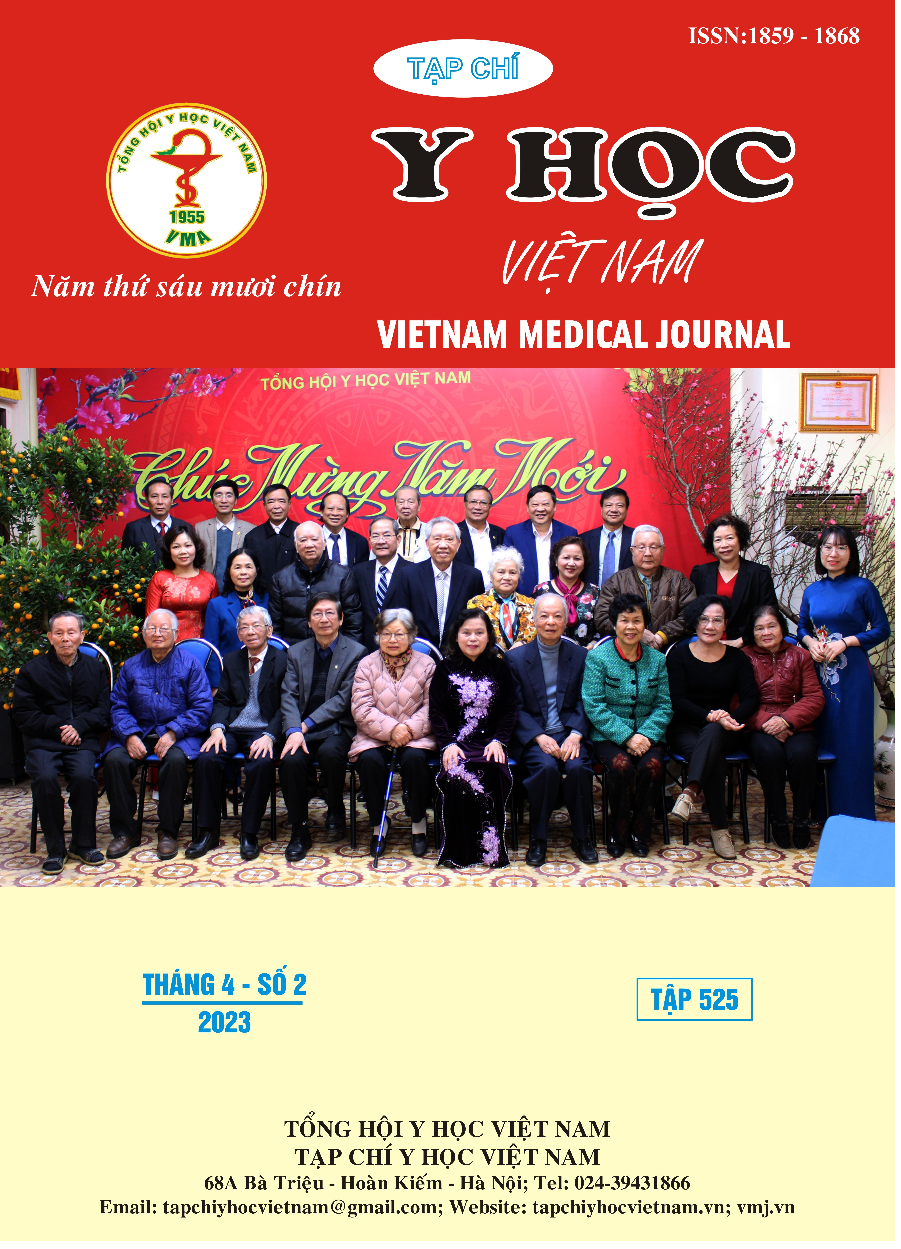SURVEY ON PHYSIOLOGICAL INDICATORS, SOME RELATED FACTORS IN 2 GROUPS OF HYPERTENSIVE AND NON-HYPERTENSION PATIENTS OUTPATIENT IN VINH CITY GENERAL HOSPITAL (2022)
Main Article Content
Abstract
Objectives: survey on physiological indicators, some related factors in 2 groups of hypertensive and non-hypertension patients. Subjects and methods: Description, prospective, controlled on 236 patients with confirmed diagnosis of primary hypertension and 196 patients with no confirmed diagnosis of hypertension who attended outpatient treatment at Vinh City General Hospital, Nghe An province. from January 1, 2022 to May 30, 2022. Results: In the group of hypertensive patients, the age group ≥ 65 accounted for the most (55.1%), retirement occupation accounted for the highest proportion (66.1%) in the group of hypertension, height, weight, BMI, average waist circumference. The mean of men is higher than that of women with statistical significance (p<0.05). BMI of overweight and obesity (55.1%) in the hypertensive group was higher than in the non-hypertensive group (34.6%). The characteristics of increased waist circumference and increased waist/buttock index in the hypertensive group were higher than those in the non-hypertensive group. In the hypertension group: The rate of physical activity was 73.7%, 32.2% of patients had diabetes, the rate of smoking was 8.5%, the rate of alcohol consumption in 1 month was 32.2. %. In the non-hypertensive group, these rates were 57.7%, 7.7%, 15.8%, and 26.0%, respectively. The difference in the rates of being physically active, having diabetes, and smoking between the two groups was statistically significant (p<0.05). The proportion of hypertensive patients who drink alcohol with daily frequency is 27.54%; about the level of drinking alcohol at the abuse rate accounted for 20.76%, drinking alcohol at an unsafe level was 6.78%.
Article Details
Keywords
Hypertension, non-hypertension, alcohol.
References
2. Phạm Gia Khải (2000). Tăng huyết áp, Cẩm nang điều trị nội khoa. Nhà xuất bản Y học. Hà Nội.
3. Phạm Gia Khải, Nguyễn Lân Việt, Phạm Thái Sơn và cộng sự (2003). “Tần suất tăng huyết áp và các yếu tố nguy cơ ở các tỉnh phía Bắc Việt Nam 2001- 2002”, Tạp chí Tim mạch học, số (33), tr. 9-34.
4. Lý Huy Khánh, Lê Thanh Chiến, Đỗ Công Tâm và cs (2012), Tổng hợp từ nghiên cứu lâm sàng: "Khảo sát mối tương quan giữa tăng huyết áp với BMI, vòng eo, tỉ số eo mông ở người dân phường Hòa Thạch quận Tân Phú". Tạp chi y tế công cộng, 2(1), 66-78.
5. Nguyễn Thiện Tuấn (2017). Khảo sát một số yếu tố liên quan đến rối loạn lipid máu trên bệnh nhân tăng huyết áp nguyên phát tại Bệnh viện đa khoa trung tâm An Giang. Luận văn tốt nghiệp thạc sĩ, Đại học y dược Cần Thơ.
6. Nguyễn Lân Việt, Đỗ Doãn Lợi, Phạm Thái Sơn và CS (2008). Áp dụng một số giải pháp can thiệp thích hợp để phòng, chữa bệnh tăng huyết áp ở cộng đồng. Đề tài nghiên cứu khoa học cấp Bộ, tr.1 - 31.
7. Phạm Thế Xuyên (2019). Thực trạng tăng huyết áp ở người dân từ 45-64 tuổi tại huyện Điện Biên, tỉnh Điện Biên và Chi phí - hiệu quả của biện pháp can thiệp. Luận án Tiến sĩ Y tế công cộng, Viện Vệ sinh dịch tễ Trung Ương.
8. Borgaonkar K., Patil R., và Benjarge P. (2016). Lipid profile in hypertension: A meta-analysis using western countries data. Int Med J, 3(11), 7
9. Osuji C.U., Omejua E.G., Onwubuya E.I. và cộng sự (2012). Serum lipid profile of newly diagnosed hypertensive patients in nnewi, South-East Nigeria. Int J Hypertens 2012, 710486.


